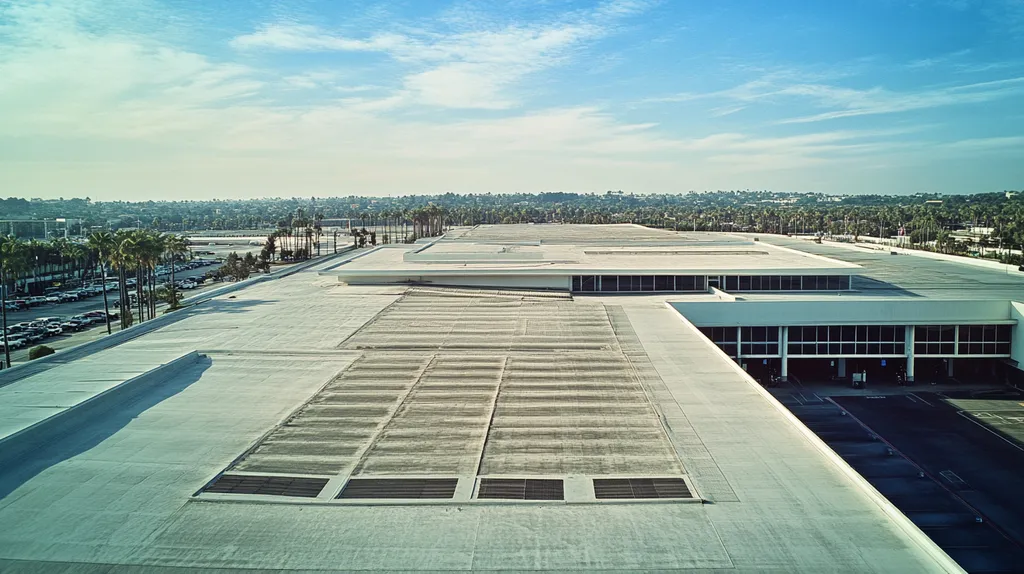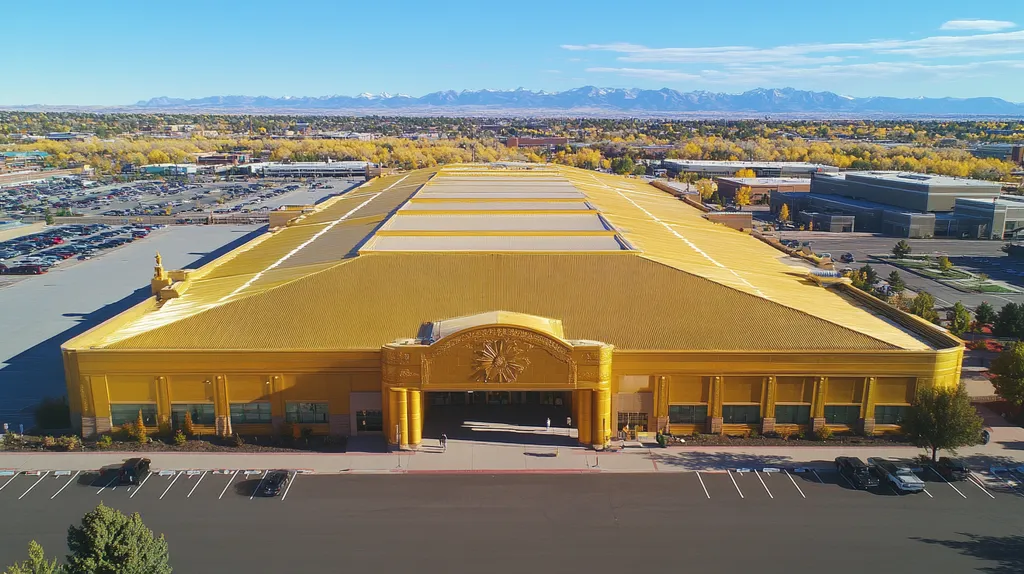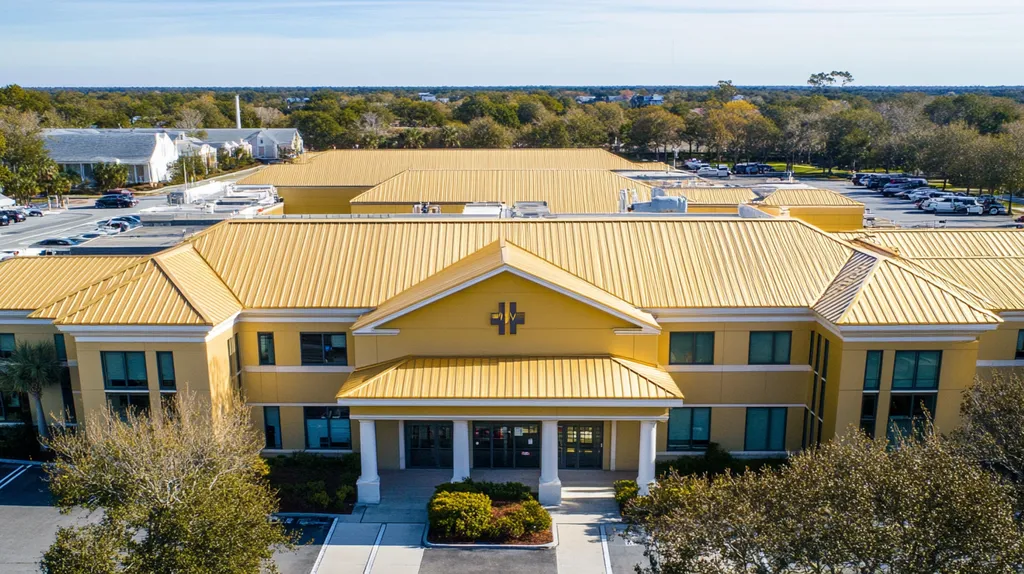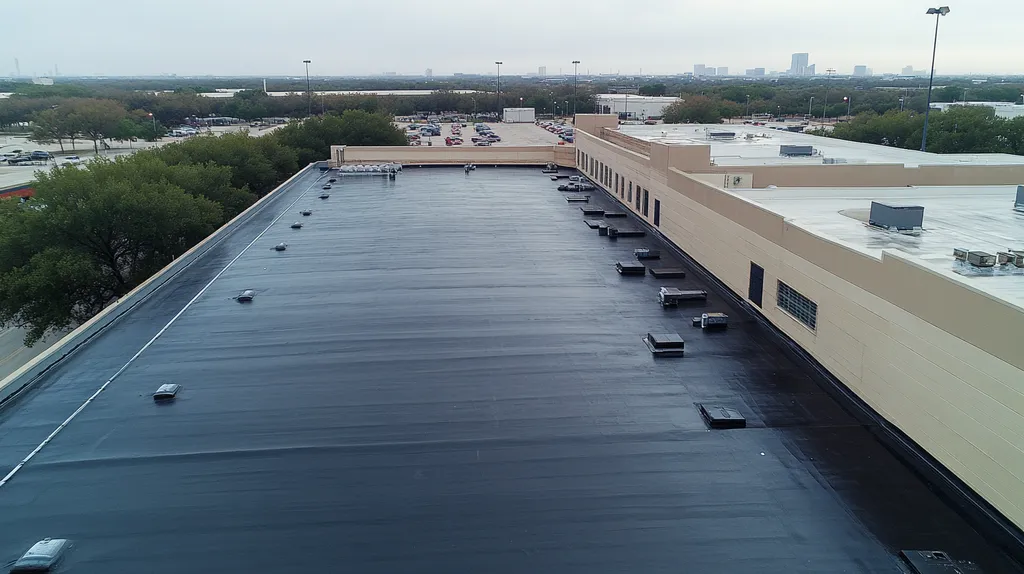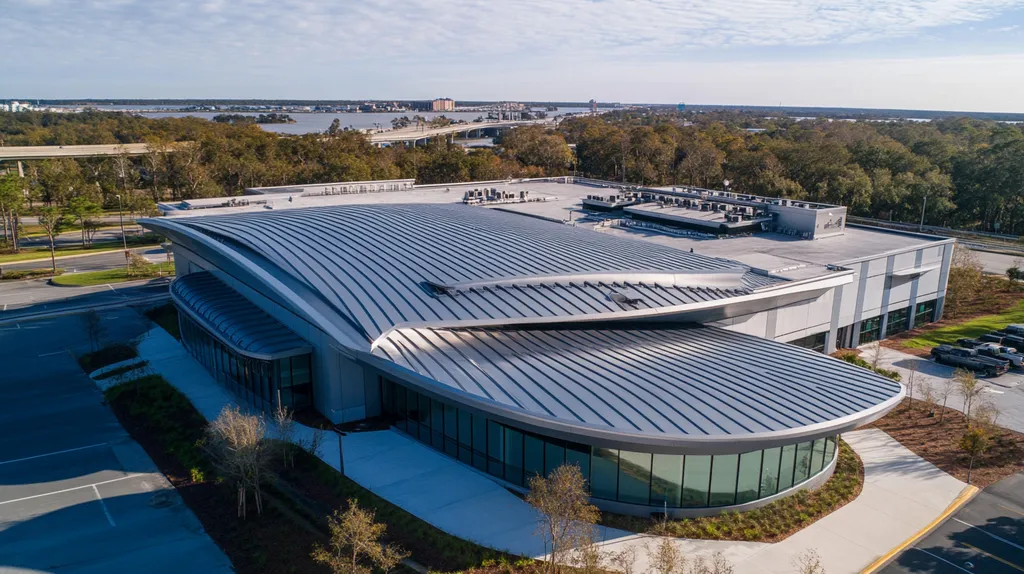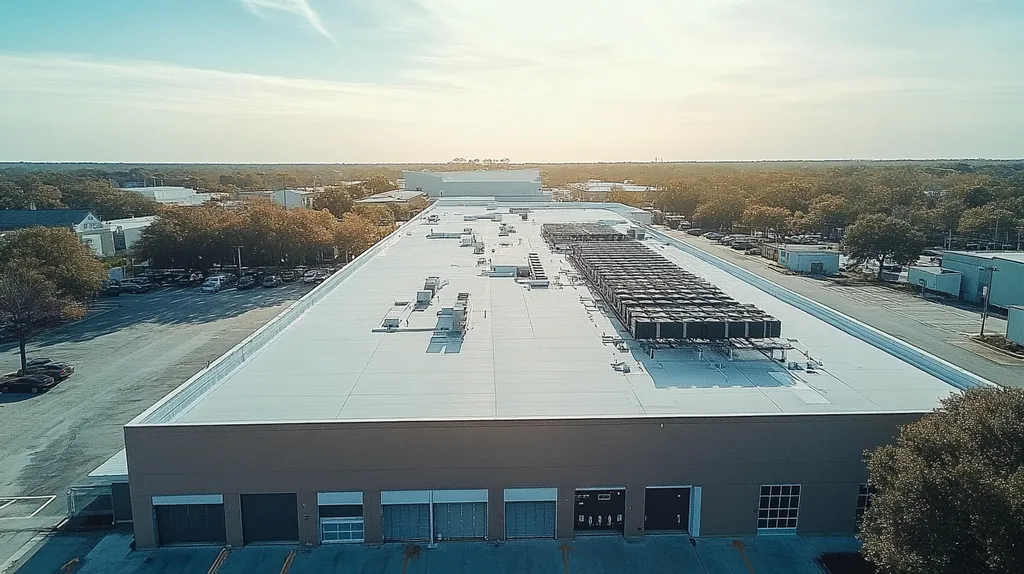Commercial roofing professionals face a critical challenge: 76% of coating failures stem from misunderstood interactions between coatings and existing roof components, resulting in over $2.1 billion in damage annually.
As building owners seek cost-effective solutions for aging roofs, the complex relationship between coatings and underlying materials demands closer examination.
From chemical compatibility issues to moisture dynamics, understanding these interactions proves essential for avoiding catastrophic failures and maximizing roof system performance.
SECTION 1: COMMON MISCONCEPTIONS
In today’s commercial roofing landscape, facility managers face mounting pressure to extend roof life while minimizing costs. Recent industry data shows that 73% of commercial buildings will require major roofing work within the next decade. While coatings present an attractive solution, widespread misconceptions about their capabilities and limitations often lead to costly mistakes and premature failures.
Coatings as a Quick Fix
The perception of coatings as an immediate solution to roofing problems has led many facility managers down a problematic path. While coatings can effectively extend roof life, they cannot compensate for significant structural deficiencies or widespread damage.
Proper surface preparation remains the cornerstone of successful coating applications. Rushing this critical step to achieve faster results typically leads to adhesion failures and coating delamination within the first year.
Success requires thorough inspection and remediation of existing issues before coating application. This includes addressing ponding water, repairing membrane splits, and ensuring proper drainage.
The true value of coatings emerges when they’re integrated into a comprehensive maintenance strategy rather than deployed as emergency solutions.
Misunderstanding Vapor Barriers
The relationship between coatings and vapor barriers represents one of the most misunderstood aspects of commercial roofing. Non-permeable coatings can function as vapor barriers with a perm rating below 1, making proper selection crucial for managing moisture within roofing systems. (source: Polyglass)
Many facility managers overlook the importance of existing vapor barrier conditions when planning coating applications. This oversight can trap moisture between layers, leading to insulation degradation and membrane deterioration.
Climate zones and building use significantly impact vapor barrier requirements. What works in arid regions may create severe problems in humid environments.
Professional assessment of vapor drive patterns and existing roof assembly composition must precede any coating application decisions.
Overestimating Coating Durability
Despite manufacturer warranties suggesting extended service life, coating durability depends heavily on environmental conditions and maintenance practices. UV exposure, thermal cycling, and mechanical stress can significantly reduce coating performance.
Regular maintenance remains essential for maximizing coating lifespan. Even minor neglect can accelerate deterioration and compromise the coating’s protective properties.
Building height, roof traffic, and local weather patterns all impact coating wear patterns. These factors must inform both product selection and maintenance scheduling.
Realistic performance expectations should guide coating investments. While quality products can deliver excellent results, they require ongoing attention and periodic reapplication to maintain effectiveness.
SECTION 2: PRACTICAL IMPLICATIONS
Understanding how coatings interact with existing roof components can mean the difference between extending roof life by decades or facing catastrophic failure within months. Recent studies show that improper coating applications lead to over $2.1 billion in commercial roofing damage annually. These interactions affect everything from basic waterproofing to complex thermal dynamics, making proper assessment and application crucial for protecting valuable roofing assets.
Impact on Roof Lifespan
Elastomeric coatings can significantly extend roof life when properly matched to existing substrates, working effectively with materials ranging from metal and single-ply membranes to modified bitumen and built-up systems. Their rubber-like properties provide superior protection against environmental stressors, enhancing overall durability. (source: Polyglass)
Chemical compatibility between coatings and existing membranes determines long-term adhesion success. Incompatible combinations can trigger aggressive degradation, leading to widespread system failure within the first 24 months.
Surface preparation quality directly correlates with coating longevity. Rushed or improper preparation typically results in coating delamination, especially in areas subject to ponding water or high foot traffic.
Regular inspection and maintenance of coated surfaces can identify potential issues before they become critical failures. Early intervention on coating breaches prevents moisture infiltration and extends system performance.
Coatings and Moisture Interactions
Moisture dynamics between coatings and existing roof components create complex challenges for building envelope performance. Trapped moisture can reduce insulation R-value by up to 40% and accelerate membrane deterioration.
Coating permeability must align with the existing roof assembly’s vapor profile. Mismatched permeability ratings often create condensation planes within the roof system, leading to widespread internal deterioration.
Temperature fluctuations can drive moisture movement between layers, making seasonal considerations crucial. Winter condensation and summer vapor drive patterns must inform coating selection and application timing.
Proper drainage maintenance becomes even more critical with coated surfaces. Even minor ponding can compromise coating integrity and accelerate system degradation.
Effects on Energy Efficiency
Surface temperature reductions of up to 50°F are achievable with reflective coatings, directly impacting building cooling costs. This temperature difference translates to potential energy savings of 15-35% during peak cooling seasons.
Coating emissivity and reflectivity values must match local climate conditions. High-reflectivity coatings in northern climates may increase winter heating costs, while low-reflectivity options in southern regions can spike cooling expenses.
Edge detail and penetration treatment significantly affect thermal performance. Poor detail work creates thermal bridges that compromise the coating system’s energy benefits.
Building orientation and roof geometry influence coating performance. South-facing slopes and large, unobstructed areas benefit most from reflective coatings, while shaded sections may require different solutions.
SECTION 3: COST OF MISINFORMATION
Misinformation about roof coatings costs commercial property owners millions annually in premature failures and unnecessary repairs. Industry data reveals that coating-related failures account for over 40% of commercial roof warranty claims, with the average remediation cost exceeding $75,000. When property owners and facility managers act on incorrect information about coating compatibility and application, the consequences ripple through every aspect of building maintenance and protection.
Financial Losses from Misuse
The direct cost of coating failures extends far beyond the initial material and labor investment. Improper coating choices can accelerate underlying membrane deterioration, requiring complete system replacement years ahead of schedule.
Water damage from failed coatings often spreads to interior spaces, damaging inventory, equipment, and building contents. A single coating failure event can trigger hundreds of thousands in collateral damage claims.
Acrylic coatings, while cost-effective and environmentally friendly, require precise application conditions and may fail prematurely when used in ponding water situations. (source: BlueTeam)
Emergency repairs on failed coatings typically cost 300-400% more than planned maintenance, straining operational budgets and forcing difficult capital expenditure decisions.
Unintended Consequences on Roof Maintenance
Inappropriate coating selections can dramatically increase routine maintenance costs by creating inspection challenges and masking underlying problems. What begins as a simple coating application often evolves into complex maintenance protocols.
Maintenance teams must adapt their inspection methods when dealing with coated surfaces, as traditional diagnostic approaches may no longer be effective. This can lead to missed early warning signs of developing problems.
The presence of incompatible coatings can limit future repair options and complicate the implementation of long-term maintenance strategies. Some coating choices effectively lock buildings into specific maintenance pathways.
Regular maintenance intervals often need to increase following coating applications, particularly when the chosen product doesn’t align with the existing roof assembly’s characteristics.
Increased Liability Risks
Property owners face expanded liability exposure when coating failures compromise building envelope integrity. These risks extend beyond simple property damage to include potential health and safety implications for occupants.
Insurance carriers increasingly scrutinize coating-related claims, often denying coverage when proper application procedures and material compatibility weren’t verified. This leaves property owners financially exposed.
Building code violations can result from coating applications that alter fire ratings or impact structural loads. These violations may trigger fines and mandate immediate corrective action.
The documentation burden increases significantly after coating application, requiring detailed maintenance records to defend against potential claims and maintain warranty coverage.
SECTION 4: REALITY CHECK
The intersection of coatings and existing roofing materials represents a critical decision point for property owners. Industry data reveals that over 65% of premature coating failures stem from misunderstanding material interactions and performance limitations. While coatings can dramatically extend roof life when properly specified, incorrect choices lead to accelerated deterioration and systemic failures that compromise building protection.
Coatings and Roofing Materials Compatibility
Elastomeric coatings demonstrate exceptional versatility across multiple roofing substrates, including metal, single-ply membranes, modified bitumen, and built-up systems. Their rubber-like properties create a durable protective layer that can maintain flexibility and adhesion for decades when properly matched to the substrate. (source: Polyglass)
Chemical compatibility between coating and substrate determines long-term success. Incompatible combinations can trigger rapid degradation through chemical reactions or mechanical stress, leading to widespread delamination within months of application.
Surface preparation requirements vary significantly based on substrate composition. Metal surfaces demand different treatment protocols than membrane systems, making standardized approaches ineffective.
Age and condition of existing materials significantly impact coating compatibility. Weathered or contaminated surfaces may require specialized primers or alternative coating formulations to achieve proper adhesion.
Actual Performance Under Stress
Environmental stressors test coating performance far beyond laboratory conditions. UV exposure, thermal cycling, and mechanical impact create compound effects that accelerate degradation when materials are improperly matched.
Geographic location dramatically influences coating effectiveness. Coastal environments demand different performance characteristics than inland locations, while freeze-thaw cycles create unique challenges for northern installations.
Building use patterns affect coating durability significantly. High foot traffic areas require enhanced wear resistance, while equipment-heavy zones need superior impact resistance.
Weather exposure patterns vary across different roof sections. Valleys, peaks, and equipment curbs experience different stress profiles, necessitating targeted coating strategies for optimal protection.
Role of Coatings in Roofing Systems
Modern coating systems serve multiple functions beyond basic waterproofing. They can enhance fire resistance, provide chemical protection, and significantly improve building energy efficiency through solar reflectance.
Integration with existing drainage patterns proves crucial for long-term success. Coatings must maintain proper flow characteristics while providing consistent protection across varying slope conditions.
Edge and penetration details require special attention during coating application. These high-stress areas often determine overall system performance and longevity.
Regular inspection and maintenance programs must adapt to accommodate coating characteristics. Different coating types require specific evaluation methods and repair techniques to maintain system integrity.
SECTION 5: EVIDENCE-BASED ALTERNATIVES
Recent industry analyses reveal that 40% of commercial roof coating failures stem from incorrect product selection and improper application techniques. These failures cost property owners an average of $3.75 per square foot in remediation expenses – nearly triple the cost of proper initial installation. Understanding evidence-based alternatives and implementation strategies has become crucial for protecting roofing investments and avoiding catastrophic failures.
Selecting the Right Coating Type
Elastomeric coatings demonstrate exceptional versatility across multiple roofing substrates, including metal roofs, single-ply membranes, modified bitumen, and built-up systems. Their rubber-like properties create durable protection while maintaining critical flexibility characteristics. (source: Polyglass)
Performance requirements vary significantly based on geographic location and building use patterns. Desert environments demand superior UV resistance, while coastal regions require enhanced protection against salt spray and moisture.
Local climate conditions should drive coating selection decisions. Freeze-thaw cycles, annual rainfall, and temperature extremes all impact coating performance and longevity.
Building height, roof slope, and drainage patterns influence coating requirements. Taller structures face increased wind exposure, while low-slope roofs may need enhanced ponding water resistance.
Implementation Strategies for Coatings
Surface preparation remains the cornerstone of successful coating applications. Thorough cleaning, proper repairs, and appropriate primer selection directly impact coating adhesion and performance.
Application timing must account for weather conditions and cure times. Temperature, humidity, and precipitation forecasts should guide scheduling decisions to ensure optimal results.
Quality control measures throughout the application process help prevent common failure points. Regular mil thickness checks and adhesion tests verify proper coverage and bonding.
Documentation of application conditions and procedures provides crucial reference points for future maintenance. Detailed records help identify potential issues before they become critical failures.
Regular Maintenance and Inspection
Systematic inspection protocols help identify early warning signs of coating deterioration. Regular evaluations should focus on high-stress areas like flashings, penetrations, and drainage points.
Maintenance schedules must align with coating type and exposure conditions. High-traffic areas and severe weather zones require more frequent inspections and potential touch-ups.
Minor repairs, when addressed promptly, prevent cascading failures throughout the system. Quick response to coating breaches protects both the coating investment and underlying roof components.
Long-term performance tracking helps optimize maintenance intervals and future coating selections. Historical data provides valuable insights for improving roof management strategies.
SECTION 6: TEST AND VERIFY
Testing and verification represent critical control points in commercial roof coating projects, yet industry data shows that 47% of coating failures stem from inadequate quality control measures. Every $1 spent on proper testing can prevent $12 in premature coating failures. Understanding and implementing robust verification protocols protects both the coating investment and the underlying roof system from catastrophic failure.
Verification Methods for Coating Effectiveness
Pull adhesion testing provides crucial data about coating bond strength to existing substrates. These tests must achieve minimum values specific to each coating type and substrate combination to validate application success.
Acrylic coatings require special attention to moisture content and surface preparation due to their water-based formulation. While offering excellent UV resistance and reflectivity, these coatings demand strict adherence to application parameters for optimal performance. (source: BlueTeam)
Wet film thickness measurements during application ensure proper material coverage. Regular checks at predetermined intervals help maintain consistent coating thickness across the entire roof surface.
Environmental condition monitoring throughout the application process prevents coating failures. Temperature, humidity, and dew point readings must stay within manufacturer specifications for proper curing.
Monitoring Coating Performance Over Time
Systematic inspection protocols should begin immediately after coating cure completion. Early detection of potential issues allows for simple repairs before problems escalate into system-wide failures.
Digital documentation of coating conditions creates valuable baseline data for future comparisons. Photos, thermal images, and detailed inspection reports help track degradation patterns over time.
High-stress areas require more frequent monitoring, particularly around mechanical equipment, drainage points, and high-traffic zones. These locations often show the first signs of coating wear or failure.
Weather event tracking helps correlate environmental impacts with coating performance. Understanding these relationships enables more accurate service life predictions and maintenance scheduling.
Industry Standards for Coating Evaluation
ASTM D6083 standards establish minimum performance requirements for acrylic roof coatings. These specifications cover elongation, tensile strength, and adhesion properties essential for long-term coating success.
Cool Roof Rating Council (CRRC) guidelines provide standardized testing protocols for coating reflectivity and emissivity. These measurements directly impact energy performance claims and warranty coverage.
Factory Mutual (FM) and Underwriters Laboratories (UL) requirements set baseline performance standards for fire resistance and wind uplift. Coating systems must maintain these ratings throughout their service life.
Quality assurance documentation must demonstrate compliance with all applicable standards. This documentation becomes crucial for warranty claims and building code compliance verification.
The Bottom Line
With over $2.1 billion in annual damage from coating failures, the commercial roofing industry stands at a critical crossroads regarding coating interactions with existing roof components.
Chemical compatibility, moisture dynamics, and proper application protocols determine whether a coating investment delivers decades of protection or triggers catastrophic failure within months.
Success requires moving beyond outdated assumptions about coating capabilities and embracing evidence-based selection criteria, rigorous testing protocols, and systematic maintenance programs.
As building technologies evolve and environmental stresses intensify, understanding these crucial interactions becomes increasingly vital for protecting commercial roofing investments and ensuring long-term building envelope performance.
The future of commercial roofing depends on bridging the knowledge gap between coating science and practical application.
FREQUENTLY ASKED QUESTIONS
Q. What are the common misconceptions about coatings on commercial roofs?
A. Many believe coatings are quick fixes for roofing issues, but they can’t resolve significant damage. Proper preparation and inspection are crucial for success. Misunderstanding these factors can lead to premature failures and higher costs.
Q. How do coatings impact the lifespan of an industrial roof?
A. When matched properly, coatings can significantly extend the lifespan of industrial roofs. However, improper materials can cause accelerated degradation. Regular maintenance is key to maximizing coating longevity and ensuring protection against environmental stresses.
Q. What financial losses can occur from coating misinformation?
A. Incorrect information can result in expensive coating failures, leading to increased repair costs. Water damage and emergency repair situations can escalate expenses dramatically, straining operational budgets and leading to complex liabilities.
Q. How do coatings interact with existing roofing materials?
A. The interaction between coatings and roofing materials is crucial for their performance. Incompatible combinations can lead to rapid system failure, while proper compatibility can enhance durability and protection, thus prolonging service life.
Q. What are evidence-based alternatives for roofing coatings?
A. Evidence-based alternatives include selecting coatings based on specific conditions, such as climate and environmental stressors. Proper application strategies and systematic maintenance can significantly reduce failures and increase the longevity of roofing systems.
Q. Why is testing and verification important for coatings?
A. Testing and verification are essential to ensure proper bonding and performance of coatings. Adequate quality control helps prevent costly failures and maintains the integrity of the roof system, ultimately safeguarding investments.
Q. What factors affect the cost of coatings for commercial roofs?
A. Factors include the type of coating, preparation requirements, and existing roof conditions. Labor costs, environmental considerations, and the overall size of the project also play significant roles in determining total costs.

